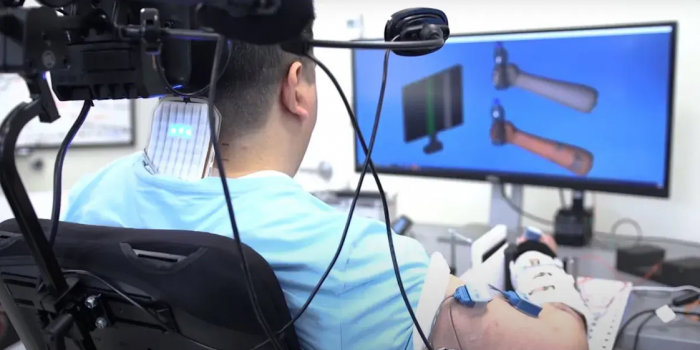In a groundbreaking scientific feat, researchers at the Feinstein Institutes for Medical Research have achieved the seemingly impossible – restoring the intricate connection between the brain, body, and spinal cord for a person with quadriplegia. Through the remarkable power of an AI-driven brain implant, the patient experienced sensations and regained control over some of his body parts.
Keith Thomas, the patient, expressed overwhelming gratitude for the transformation he had experienced since the implant surgery. Previously uncertain about his future, Keith now relishes the ability to feel the touch of someone holding his hand, a sensation he thought he might never experience again. The hope offered by this extraordinary achievement extends beyond Keith’s case, as paralysis affects over five million people in the United States alone, with limited treatment options available to significantly improve their condition.

The brain implant has ushered in new possibilities, rekindling hope for patients with paralysis by potentially reconstructing lost neural pathways and restoring normal brain and spinal cord function. Keith’s case serves as a beacon of optimism, as his journey from complete paralysis below the chest region to newfound sensation and arm movement exemplifies the life-changing potential of this technology.
Before the implant surgery, comprehensive MRI scans and detailed brain studies were conducted to identify the affected areas precisely. During the 15-hour surgery at North Shore University Hospital, Keith was awake to provide real-time feedback on sensations as the implant was placed in different brain regions. This meticulous approach ensured that the brain implants were strategically positioned in the areas responsible for movement and touch, maximizing their efficacy.

The surgery results were astonishing, with Keith experiencing sensations in his hand even when not connected to the lab computer. The researchers harnessed the power of AI to convert Keith’s thoughts into actions, allowing microchips inside his brain to establish the necessary connections between the brain and spinal cord for voluntary movement and sensory feedback.
Chad Bouton, one of the researchers at the Feinstein Institutes, hailed this thought-driven therapy as a true game-changer, envisioning a future where individuals living with paralysis can lead fuller and more independent lives. Keith’s inspiring words reflect his desire to help others, emphasizing this breakthrough’s far-reaching potential in transforming countless individuals’ lives worldwide.
With the hope that this brain implant technology will pave the way for treatable paralysis and serve millions of patients in the future, scientists continue to push the boundaries of medical innovation. As the journey of discovery continues, there remains a bright beacon of hope for patients who may one day experience the profound benefits of this remarkable medical achievement.


